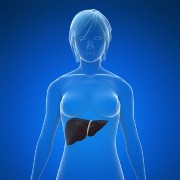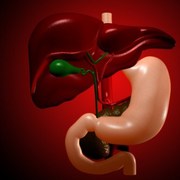 Photo: Getty Images
Photo: Getty Images
For most people, the liver doesn’t seem all that important. It is very easy to see and learn what portions of our lifestyles affect the heart and lungs and even our skin, which is our body’s largest organ.
But, for many, the liver is pretty much ignored and we fail to recognize how much it does and how an unhealthy liver can affect so many other systems in our body.
What does the Liver do?
The liver is the second largest solid organ in the human body, and is also classified as a gland since it generates bile, which aids in digestion.
The liver acts as the body’s “detoxifier”. The enzymes it produces break down many toxins and chemicals such as ammonia, which is produced when our bodies digest proteins.
The ammonia is broken down into urea which is a less toxic fluid. The urea is then transferred to the kidneys and is discharged from our bodies as urine. The liver is also responsible for breaking down medications and alcohol.
It serves as one of the storage facilities in our bodies for sugar, which is stored as glycogen (glucose), and releases it into the bloodstream to provide muscles a source of energy when exercising.
The liver also make cholesterol and other fats that our bodies need, which are important in maintaining healthy cells and hormones.
The liver produces proteins that help with blood clotting as well.
The liver is the only organ capable of regenerating itself if parts of it are removed or become diseased. However, too much damage from overuse of alcohol, drugs and medications can lead to permanent damage.
What is Cirrhosis?
“Cirrhosis is the twelfth leading cause of death by disease, accounting for 27,000 deaths each year. The condition affects men slightly more often than women” (National Digestive Diseases Information Clearinghouse – NDDIC). “About 5 percent of people with cirrhosis get liver cancer” (MedlinePlus).
Cirrhosis happens when the liver has deteriorated to the point where scar tissue replaces healthy tissue, partially blocking the flow of blood through the liver and impairing the liver’s ability to heal itself.
This scar tissue and decreased blood flow also means that the liver can no longer do its job which is to:
- control infections
- remove bacteria and toxins from the blood
- process nutrients, hormones and medications
- make proteins that regulate blood clotting
- produce bile needed to help absorb fats, cholesterol and fat-soluble vitamins
When the liver can no longer function, or when complications cannot be controlled, a liver transplant is the only option. Only with a healthy liver can a person survive.
Symptoms of Cirrhosis
As with other bodily systems, once the liver starts to fail, other systems, processes and organs become affected.
Common symptoms of cirrhosis include, but are not limited to:
- weakness
- fatigue
- loss of appetite
- nausea
- vomiting
- weight loss
- abdominal pain and bloating when fluid accumulates in the abdomen
- itching
- spider-like blood vessels on the skin
There are a whole host of complications associated with the breakdown of liver function. These complications are often the stronger indicators that something is not right with the liver:
- collection of fluid in the legs (edema) or abdomen (ascites)
- easy bruising and bleeding
- portal hypertension (where the flow of the blood from the intestines and the spleen to the portal vein via the liver is slowed)
- enlarged blood vessels in the esophagus (varices) or stomach (gastropathy) due to portal hypertension which may burst resulting in serious bleeding
- enlargement of the spleen and reduction of the release of white blood cells and platelets into the bloodstream (splenomegaly)
- jaundice where the liver doesn’t remove enough bilirubin pigment from the blood (bilirubin give bile its reddish-yellow color)
- gallstones which happen when bile is unable to flow freely to and from the gallbladder so it hardens into stones
- sensitivity to medications – medications may act longer than expected, build up in the body; a person becomes more sensitive to the medication and to its side effects
- build up of toxins in the brain (hepatic encephalopathy) because the liver is unable to remove the toxins from the bloodsteam
- insulin resistance and type 2 diabetes
- liver cancer
- immune system dysfunction
- kidney and lung failure
We will look at the causes and available treatment options in Part II.
Sources:
Liver. Gastroenterological Society of Australia. Web. Sept 22, 2011. http://gesa.org.au/digestive-system/liver.cfm
Cirrhosis. National Digestive Diseases Information Clearinghouse by the U.S. Department of Health and Human Services. Web. Sept 22, 2011. http://digestive.niddk.nih.gov/ddiseases/pubs/cirrhosis
Cirrhosis. MedlinePlus a service of the U.S. National Library of Medicine National Institutes of Health. Web. Sept 22, 2011. http://www.nlm.nih.gov/medlineplus/cirrhosis.html
Reviewed September 22, 2011
by Michele Blacksberg RN
Edited by Jody Smith






Add a CommentComments
There are no comments yet. Be the first one and get the conversation started!